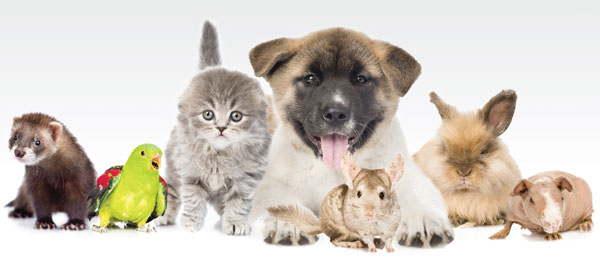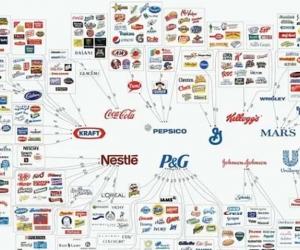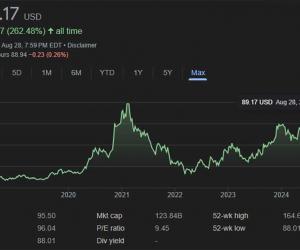沙利文浅谈亚洲的宠物经济
From special hotels to salons and toys, Asia’s pet industry is expanding fast and generating big profits
 |
When Emma Jia was in Hong Kong recently for a five-day holiday, she was unable to relax. She spent most of her time worrying about her “son and daughter” staying at a pet hotel back in Beijing.
“I will never leave them alone again,” said Jia, as she busied herself shopping for clothes and toys for her “kids” — a 4-year-old shih tzu named ChouChou and a young cat.
The 31-year-old spends a lot of money on goods and services for her pets — sometimes more than she spends on herself — including, on that trip, over HK$5,000 ($645) at one pet supplies store alone.
“I need to buy some presents for them to cheer them up,” she said. “I heard that ChouChou has been depressed since I sent him to the hotel and has not eaten much for a while.”
For Jia, spending money on pet products is not a luxury but a necessity. Pet food and grooming supplies go on her shopping list alongside milk and soap and shampoo. And she is hardly the only one.
Pretty much all of Asia is going wild over dogs — or cats, birds, hamsters, guinea pigs; in fact, all of the cute animals held dear to owners’ hearts. Pets can provide a lot more than emotional support.
For some they generate big profits. A whole industry that has operated in the West for decades is now expanding in Asia and the prospects for growth are very good.
Asia’s pet products market was worth an estimated $10 billion in 2015, according to consulting firm Frost & Sullivan. At first blush, this is a large number and one that has contributed to the emergence and growth of pet fairs, events and publications throughout Asia.
It is a number driven by economic growth and an emerging middle class. But what really has the industry salivating is the prospect for growth in the region.
The same industry in the United States — with about an eighth of the population of this region and less than a third of the population of China alone — was worth $60.28 billion in 2015, according to industry body the American Pet Products Association.
Spending on supplies and over-the-counter medications alone in the US is likely to reach almost $15 billion this year.
People are splashing out more on veterinary care, while services like grooming, walking, training, pet sitting and exercising grew 11.8 percent to be worth $5.4 billion.
All of these services are now taking off in Asia. In Singapore and Hong Kong, pet groomers are fashionable, while they are also very common in Seoul and Tokyo.
According to Euromonitor International, the pet food markets in China and the Philippines likely grew by 10 percent last year, 14 percent in Thailand and Indonesia and by a staggering 25 percent in India.
Asia’s pet care market is growing about 4.6 percent per year and accounts for about 9 percent or $9.8 billion of global spending of $105 billion.
Neil Wang, global partner and president for Greater China at Frost & Sullivan, noted that Japan accounts for 40 to 50 percent of the Asian market, with spending of $4.8 billion in 2015. Pet owners there are the biggest spenders per capita in the region, with the average cat or dog owner spending $78 per year on their pets.
“In line with the economic growth in Asia, an increasing number of people are keeping pets,” he said. This includes those who consider animals as family members and are willing to make purchases for them.
“The main consumer group for pet products is the middle- to high-class pet keepers, especially the young generation living in first-tier cities,” Wang said.
 |
| A clinic for pets in Shenzhen, southern China. Asians spent $10 billion on their pets last year and the industry is set for explosive growth. (PROVIDED TO CHINA DAILY ASIA WEEKLY) |
In Japan, for example, cat cafes are popular spots for customers to spend time with resident animals. And forget the Hello Kitty theme park; the Motoazabu Hills Forest Tower apartment complex in Tokyo features a special foot bath for pets.
However, the market is still very much in its infancy in the largest and fastest-growing economies, like the Chinese mainland, India and Indonesia, where there are billions of people and a rapidly growing middle class.
Although China’s pet products market is still developing, the success in Shanghai last month of the 19th annual Pet Fair Asia, where a bigger-than-expected crowd forced the box office to shut down after three hours, suggests huge potential.
Wang pointed out that China’s pet population is relatively low when compared with around 400 million pets in the United States and 200 million pet dogs and cats in Japan. “In China there are around 100 million pets,” he said.
“Also, Chinese pet keepers were (once) more willing to buy basic pet products and are now gradually switching to luxury ones. Hence, the China pet product market is still developing and showing large potential.”
Something similar is happening elsewhere in Asia.
“In developing regions like Southeast Asia, the pet product market is still an emerging market and the pet food business is growing rapidly, while in mature markets such as Japan, veterinary care is expected to be one of the strongest drivers of the market,” Wang said.
Consumers have already upgraded to luxury pet products in Japan. “However, in developing countries, the awareness of purchasing goods for pets has just emerged and consumers’ purchasing power is limited by relatively lower disposable incomes,” Wang explained.
But as incomes rise, the industry is expecting a similar increase in spending on pet products. “The pet food business still leads the market, while other services like vet care are also rapidly developing,” Wang said.
“The pet product market in Asia is becoming increasingly mature and diversified, and is likely to grow faster than the world average in the coming years.”
Entrepreneurs are tapping into the opportunities. Among them is WH Cheung, who has run a pet shop with his wife in Hong Kong’s Wan Chai district for more than a decade.
“When we first opened the store, most customers were celebrities or professionals who had large flats or even gardens,” Cheung said.
“They drove their cars to buy food or some basic supplies, or called for delivery. Raising a pet was kind of a symbol of their identity of being middle to upper class.”
But now, the profile of Cheung’s regular customers has changed: They are more average people. And the products they want have also changed, with certain clients likely to keep more exotic pets like snakes.
“We’ve seen more young couples coming and asking for a lot of new stuff — for example, portable bathrooms for pets, and mini GPS trackers for pets,” said Cheung.
“I have to admit that many products we are selling now in the store were first introduced to us by our customers. They are quite demanding to provide the best things for their pets. The relationship is more like parents with their kids.”
As pet ownership becomes more common and products grow in diversity, the industry itself is expanding.
Cheung has noticed there are not only more competitors but also others offering complementary services, such as pet beauty salons and dog hotels. “The landscape has changed rapidly and the entire industry has taken off,” he said.
These are the kinds of services that Jia, and many other “mothers”, look for and are willing to pay for. During her time in Hong Kong, she stayed in constant communication with the owner of the Beijing pet hotel where she left her dog and cat.
She said she did extensive research before choosing a particular place, and made sure the facility was ranked among the top five in multiple pet forums. Even then, demand is high and a place is not guaranteed.
“You have to book at least two weeks (in advance) to make sure there are still available rooms,” said Jia.
Owners can then check on their pets through pictures and clips the facility sends every few hours, she said.
“The most important thing is that they have vets in house in case the pet gets sick. Pets, dogs in particular, get sick easily when they suddenly come into a totally strange environment.”
For her five-day holiday, Jia spent HK$2,000 on her own stay in Hong Kong, sharing a room with a colleague. But a shared room was not an option for her “kids”. Two portable pet houses cost her around HK$2,500.


































